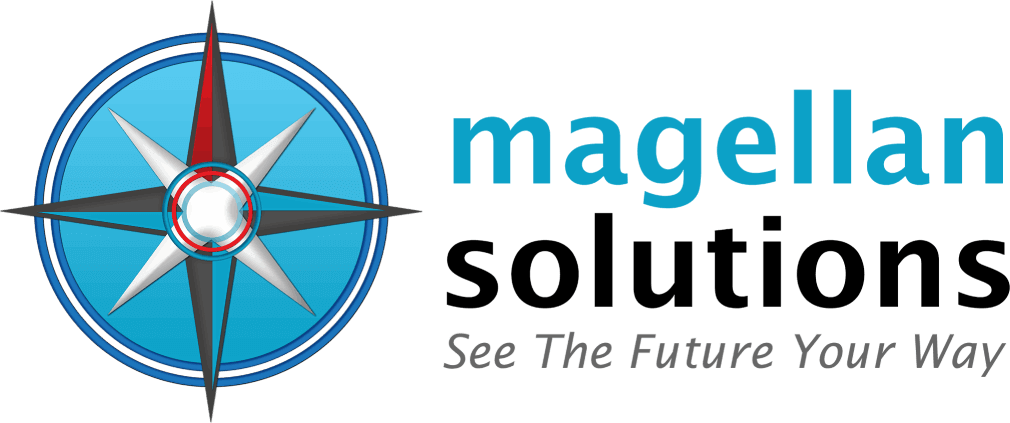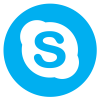Schedule a FREE call with our outsourcing expert now and get a precise quotation that meets your requirements. Don't wait - get started today!
Valuable answers come from practical questions.
In this article, you’ll learn about the top market research questions you can ask to obtain valuable insights from your potential and existing market.
What you’ll learn:
- What is market research?
- How to write market research questions
- Examples of market research questions
- For existing customers
- For potential customers
- For competitive analysis
- For customer service improvement
What is market research?
Market research is the systematic process of getting and analyzing feedback from different market segments. Using this approach, you can identify the potential of your product or service when offered to a specific consumer demographic.
In other words, it helps you find the right customers to patronize your business. It also enables you to determine the pain points of your target market. Through this, you can develop or improve products or services that can resolve the struggles of your existing customers or target audience.
It has three main methods:
- Online survey – This tool can gather information from a sample population online. To help you get started, check out some of the methods for conducting surveys:- If you are starting a business, you can begin by utilizing email and social media to send survey questions or polls to your target market.- You can also embed it into your website or app, but since it is a reactive method, the chances of getting feedback are lower.- If you think you have the budget for it, you can send it to paid survey sites to get higher response rates.
- Phone interview – Have you experienced receiving cold calls from certain companies asking about your opinion on a particular product or service? If yes, then you’re probably familiar with market research. A phone interview is a proactive way of conducting market research surveys. It guarantees you a faster and more accurate response from your target demographics. Some companies outsource to a survey call center to expand their reach while saving time and money.
- Face-to-face interviews – This is the traditional way of conducting customer surveys. It is one of the best ways to get actual, first-hand opinions. Unlike the first two methods, it requires you to go out to the street and into the houses of your sample respondents. Here, you can encourage consumers to participate by giving freebies or samplers. While this is an excellent way to build personal relationships with your ideal customers, it is not as efficient as phone interviews and online surveys.
Aside from gathering first-hand consumer data, you can also keep track of economic trends.
Secondary information provided by existing sources enables you to kick-start your market research. It gives general and quantifiable data on industry trends, demographics, and potential competitors.
Some of the best secondary information sources include government census data, statistics and research reports published by independent market research firms, and business news.
How to write market research questions
It’s easy to think of and write questions right off the bat. But first, make sure you’re square on the following details:
- What is the problem you want to solve?
- What are your goals/objectives?
- Who is your target audience?
From there, you can start brainstorming questions that would provide insightful information for your marketing, sales, and research and development departments.
Here are some things you can consider that will add depth and dimension to your market research process:
- Demand is the number of products consumers are willing to purchase at any given time.
- Market size – the number of potential consumers within a specific market.
- Customer demographics – any given sector of a population segmented using different factors such as age, gender, occupation, income, location, etc.
- Location – the place where the target market resides.
- Market saturation – the number of similar products available to target customers.
- Economic indicators – any economic activity in the location of your business that is presented in metric format.
- Pricing – the cost of products or services based on target consumers’ economic status and competitors’ current pricing.
Once you’ve listed enough questions based on some of these elements, the next step is to select questions that bring you closer to your objectives. Make sure to remove those that won’t give enough value.
While answering those questions, create a clear picture or a registry of the possible target audience response. Ask only what is necessary to prevent your respondents from getting bored. Remember that if it takes too long, they might get triggered to answer questions hastily.
Also, keep your market research process simple. Through this, you will not only keep the attention of your respondents, but it will also enable you to obtain valuable answers.
Examples of market research questions
Do you still find yourself struggling to come up with appropriate market research questions? If yes, check out these examples and carefully select what you need.
Market research questions for new businesses
If you’re opening a new business, it pays to gather extensive information about the industry, market size, target audience’s buying behaviors, competitors, and competitive advantage.
- Who are your target customers?
- What are the core problems of your customers?
- What is your product or service?
- How can your product or service solve the problems of your customers?
- Does your product fit into the current market?
- Is it possible to create a new market for your product?
- What is the current market size? What is the potential size of the market?
- Will the market size grow or contract? Why?
- What are the buying habits in the market? How can we exploit them?
- What are the existing segments of the market?
- In which segments do you plan to compete?
- Which of the segments are growing, and which are contracting?
- Who are your direct competitors? What are their strategies for attracting customers?
- What is your competitive advantage?
- Where do you plan to establish your business?
- What is the current economic status of your target customers from that location?
- How much do you plan to charge your customers for availing of your products or services?
- How much are you going to spend on customer acquisition?
When starting a new business, position yourself as an expert. This means having in-depth knowledge about your customers, the industry, the market trends, and competitors.
It is essential to curate questions that can show you opportunities to succeed. Assess your edge over your competitors. For example, you can ask your target market how your competitors can improve their products or services. Once you’ve analyzed their answers, it will be easier to figure out what you can add or enhance to meet customer expectations.
Market research questions for new product launch
Expanding your product line also requires lots of research and market testing. Here are some of the questions you can ask.
- How do you plan to test your new product?
- What will you test? (Product, marketing collaterals, marketing message, etc.)
- Where will you find users who will test the product?
- How high is the current demand for your new product?
- How are you going to promote it?
- What channels are you going to use?
- Where do you plan to promote it?
- Who will be your market?
- How much do your competitors charge for a similar product?
Before launching a new product, you must know your target customers, the demand for the product, your marketing or advertising strategy, and your possible competitors.
Questions to ask existing customers
When researching existing customers, the main goal is to find out how they feel about your brand. Since they have first-hand experience using your products, they are the ones who can show you their strengths and weaknesses.
You can use a rating scale or a checklist for these questions. This way, it will be easier for your customers to answer your survey.
Checklist with ‘other’ option in case the answer isn’t indicated on your survey form:
- How did you hear about us?
- How long have you been our customer?
- What problem does our product solve for you?
- What features do you like most about our product?
- What do you like the least about our product?
- What made you choose us over the other products in the market?
- How often do you purchase our product?
- Would you avail of our product/service again?
- What else can we do to improve your experience with our brand?
Rating scale
-
- How well does our product meet your needs?
- How would you rate your last experience with us?
- How likely are you to recommend our product to a friend?
- How will you rate the speed and promptness of our customer service team?
The goal of conducting market research among your existing customers is to know their satisfaction with your brand. This will let you see what you need to continue doing and the areas you need to improve.
Market research questions to ask potential customers
When interviewing your potential customers, get enough information about their demographics, socioeconomic status, and unique interests.
These are the essential information you need to acquire:
- Age
- Gender
- Address (doesn’t need to be specific, especially if confidentiality is required)
- Education level
- Profession/Job
- Household income
- Household size
On the other hand, these are some questions you can ask to help you better segment your target audience:
- What are your hobbies and interests?
- What are the common challenges you encounter regularly?
- What are your main goals?
- What products do you consider the most important for your everyday life?
- Where do you usually discover new products?
- How much do you spend when purchasing (specify here the type of product you’re offering)?
- How often do you buy (again, specify here the type of product you’re offering)?
- How likely are you going to buy our product?
You can also add more questions about your brand to get the necessary information when improving your marketing message.
These questions will help your marketing team create value-added promotional materials that appeal to your target audience.
Questions for competitive analysis
Competitive benchmarking lets you compare your performance against your direct competitors. Here are some questions to help you get started:
- How’s your brand’s performance compared to your competitors?
- How do your competitors advertise or market their products?
- What are the other brands’ customer acquisition strategies?
- How much web traffic does your competitor receive?
- What keywords are your competitors using?
- What type of content are they producing?
- Are you using the same keyword on your website?
- What other channels do your competitors use aside from their websites?
- How many inbound links do your competitors have?
- How active are the other brands in producing backlinks with authority websites?
Measure your success by knowing the performance of your competitors. Analyzing their products, services, marketing strategies, sales, authority in the industry, customer acquisition strategies, and branding will let you see where you can thrive better than your competitors.
To improve customer service
Customer service is a crucial element in customer retention. It serves as the fine line between repeat business and an abandoned transaction. Do it right, and your customers will come back for more. Neglect it, and your customers are likely to move to your competitors.
Always check the quality of customer service you provide to keep your loyal customers.
- How fast do you respond to inquiries?
- How well and quickly do you resolve customer complaints?
- What are your customer satisfaction ratings?
- What problems do your customers often experience concerning your customer service?
- How can you improve your customer service?
- How can you measure your customer experience?
- Do your customers know all of the features, products, and services your business offers?
- Do you provide a personalized experience?
- How convenient is it to reach your business?
- What customer service channels are you using?
- Is your website or mobile app user-friendly?
- Is the experience consistent across all channels?
- Does your brand appear trustworthy based on online reviews?
- If you have international clients, do you provide multilingual options?
As high as 49% of US customers leave a brand due to poor customer service. Don’t let this happen to your brand! Regularly assess the quality of your customer service to provide positive customer experiences.
In conclusion
Market research can save a lot of trouble and financial heartbreaks when done right. Whether starting a business, chasing growth, creating better marketing messages, or improving your processes, market research can bring you the answers you need to develop dynamic strategies. Ask the right questions, and you’ll surely get valuable results.
Do you need the help of a market research call center to reach a wider audience within a shorter time? Magellan Solutions is here to help! We offer tailor-fit solutions to meet the needs and budget of your business. If you want to know more, contact us using the form below.
















